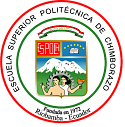Precision agriculture using WSN with smart nodes applied to an irrigation system in blackberry cultivation
DOI:
https://doi.org/10.47187/perspectivas.vol3iss2.pp26-30.2021Keywords:
Sensor network, Network topology, Precision cultivation, Irrigation controlAbstract
Intelligent sensor network for the supervision and control of irrigation of the blackberry plot in the Experimental Irrigation Center (CER) of the ESPOCH consists of an electronic system of wireless sensors based on Arduino development boards. The system consists of three nodes with a mesh-type network topology that allow measuring soil moisture and ambient temperature to suggest when it is necessary to irrigate and its volume. In addition, it includes a mobile application that maintains communication via Bluetooth to view the readings from the sensor node. On the other hand, the data is received and visualized in real time in a graphical way and stored in the free ThinkSpeak platform. The acquisition of the samples was carried out during eight consecutive days and the results presented show that the wireless system implemented maintains a communication without loss at distances of 300 meters in direct line of sight with a reception power of -58dBm.
Métricas
References
F. González, J. Herrera, and O. Hernández, “Base de datos sobre necesidades hídricas A database on water requirements,” Rev Cie Téc Agr, vol. 21, no. 2, pp. 42–47, 2012, [Online]. Available: /scielo.php?script=sci_arttext&pid=&lang=pt.
Y. A. Deaquiz, J. G. Álvarez Herrera, and L. P. Pinzón Gómez, “Efecto de diferentes láminas de riego sobre la producción y calidad de fresa (Fragaria sp.),” Rev. Colomb. Ciencias Hortícolas, vol. 8, no. 2, p. 192, 2015, doi: 10.17584/rcch.2014v8i2.3213.
W. Klohn and B. Appelgren, “Agua y desarrollo,” Revista CIDOB d’Afers Internacionals, pp. 105–126, 1999.
J. Vega and M. Ruiz, “Agricultura de precisión: hacia la integración de datos espaciales en la producción agraria,” Ministerio Ambiental, pp. 10–11, 2013.
R. Ortega, P. Claudio, and L. Flores, Agricultura de precisión, Cargill Ch. Chillán, 1999.
E. García and F. Flego, “Agricultura de precision,” Tecnol. Agropecu., pp. 24–31, 2009, [Online]. Available: https://www.maquinac.com/wp-content/uploads/2015/07/Agricultura-de-Precision-Universidad-de-Palermo.pdf.
E. Maya and G. Chafla, “Red inalámbrica de sensores a través de 6loWPAN para una agricultura de precisión,” Sathiri, no. 6, p. 22, 2018, doi: 10.32645/13906925.277.
El Telégrafo, “El agua siembra, riega y cosecha desarrollo,” Quito, p. 1, 2014.
J. Gálvez and H. Cazares, “Diseño e implementación de un sistema de riego inteligente mediante lógica difusa para el Centro Experimental de Riego de la Facultad de Recursos Naturales,” Escuela Superior Politécnica de Chimborazo, 2016.
L. Romero, F. Piña, and M. Goire, “Red de sensores inalámbricos para las casas de cultivos protegidos San José,” Ing. Electrónica, Automática y Comun., vol. 39, no. 1, pp. 16–26, 2018.
R. Faludi, Wireless sensor networks, O’Really M. New York, 2010.
P. Manohara Rao, Y. Chalapathi Rao, and M. Ashok Kumar, “Performance analysis of ZigBee wireless sensor networks using Riverbed simulation modeler,” Proc. 2nd Int. Conf. Inven. Syst. Control. ICISC 2018, no. January, pp. 1272–1277, 2018, doi: 10.1109/ICISC.2018.8399010.
M. Flores and F. Quiroz, “Mapeo de la señal Wifi mediante un dispositivo implementado en Arduino,” Jóvenes En La Cienc., vol. 3, no. 1, pp. 494–497, 2017, [Online]. Available: http://www.jovenesenlaciencia.ugto.mx/index.php/jovenesenlaciencia/article/view/941.
C. Vera, J. Barbosa, and D. Pabón, “Parámetros de configuración en módulos Xbee-pro S2B ZB para medición de variables ambientales,” Tecnura, Bogotá, pp. 141–157, 2015.
J. Ceja, R. Renteria, R. Ruelas, and G. Ochoa, “Módulo ESP8266 y sus aplicaciones en el internet de las cosas,” Revista de Ingeniería Eléctrica, p. 24'36, 2017.
Published
How to Cite
Issue
Section
License
Copyright (c) 2021 Marjorie Paredes, Wilson Zúñiga, Andres Fernando Morocho Caiza, María Mendoza

This work is licensed under a Creative Commons Attribution 4.0 International License.
Copyright
The authors of the manuscripts will retain their copyright on their articles published in Pespectivas Journal. These rights allow the authors to present their manuscripts in public, prepare derivative works, reproduce them physically by printing and distribute them on their social or research networks. These rights will remain unchanged as long as the authors respect the publication and free access policy of Perspectivas Journal.
Publication Rights
Perspectivas Journal reserves all first publication rights on each of the articles that the authors have sent to its review and publication process. It implies that authors will only exercise their copyright if they state the source and origin of the publication correctly, mainly when they distribute, share, present, or use their articles' total or partial content.














